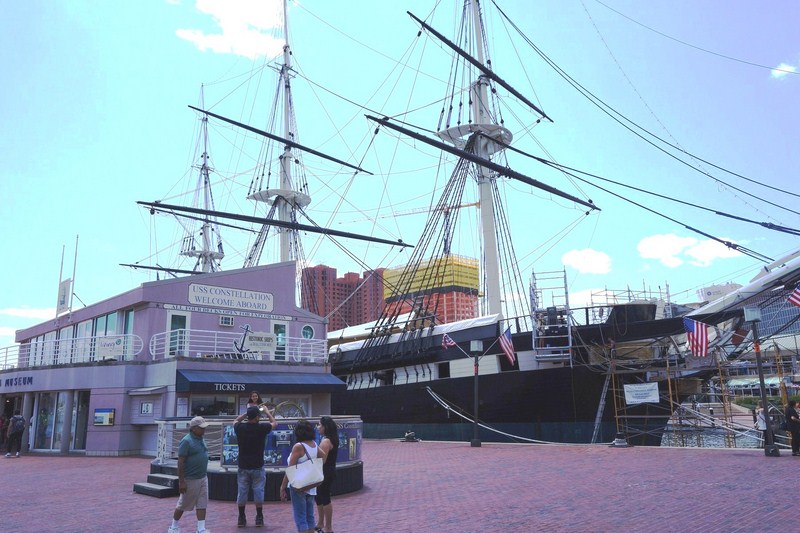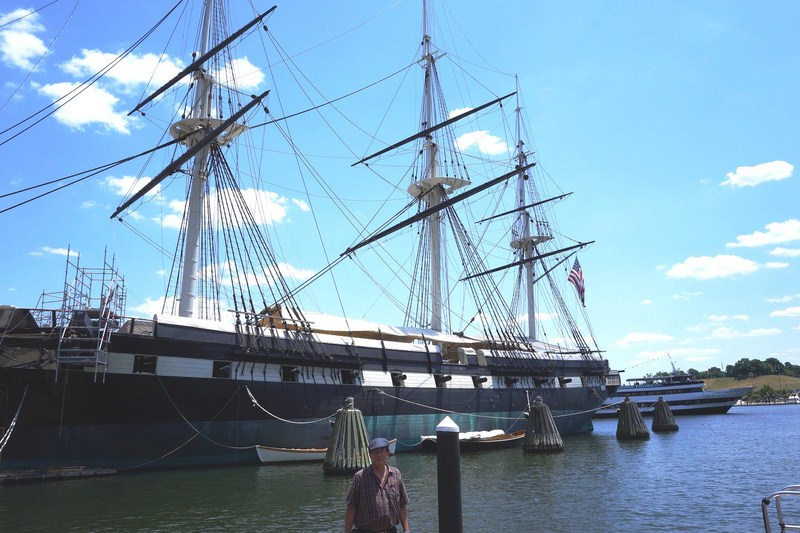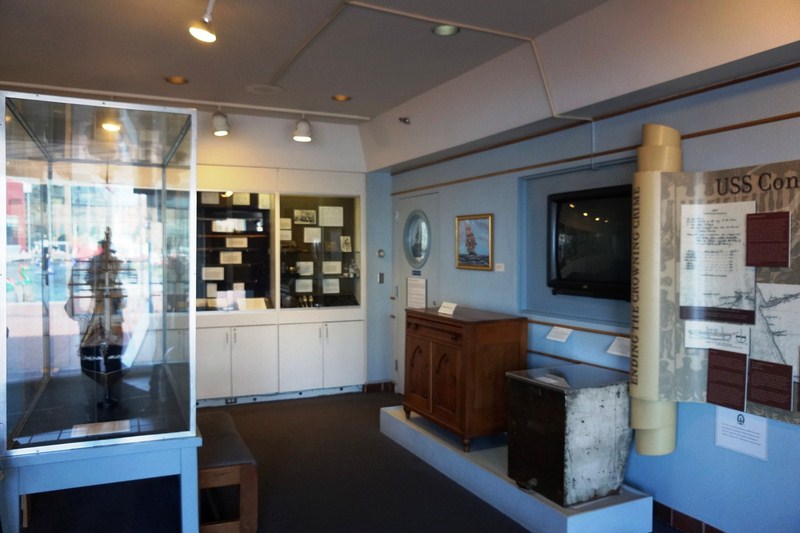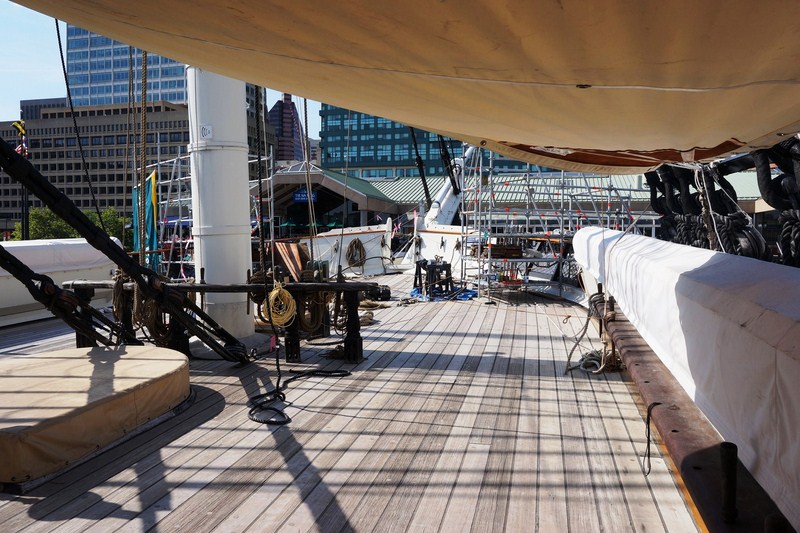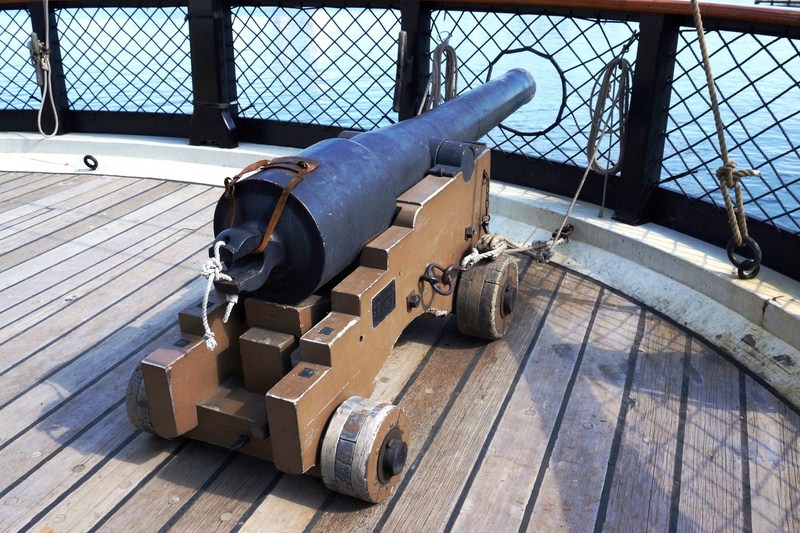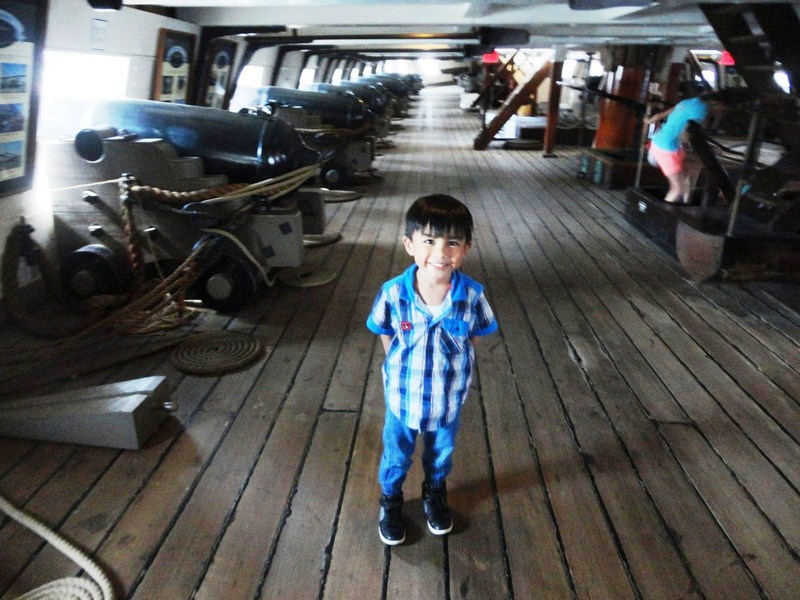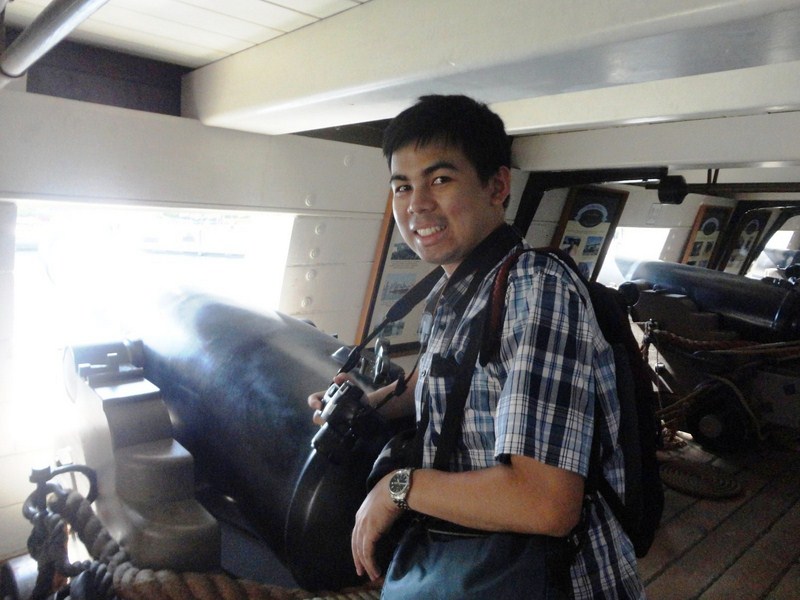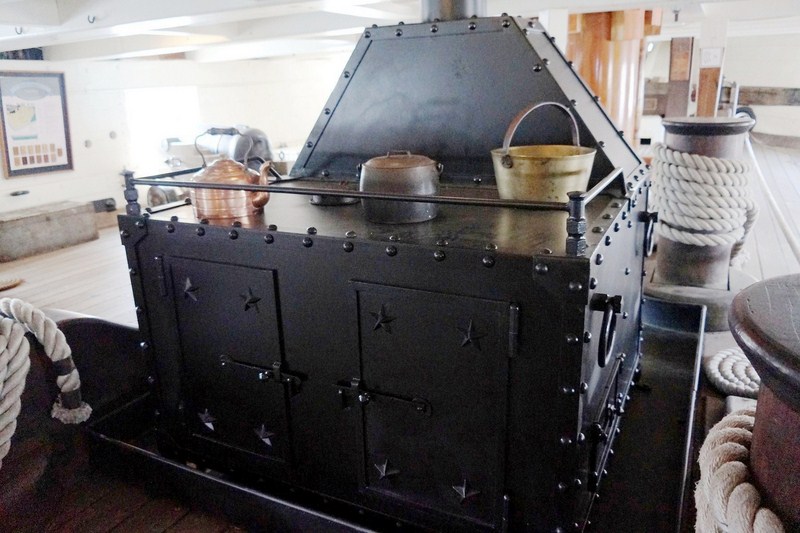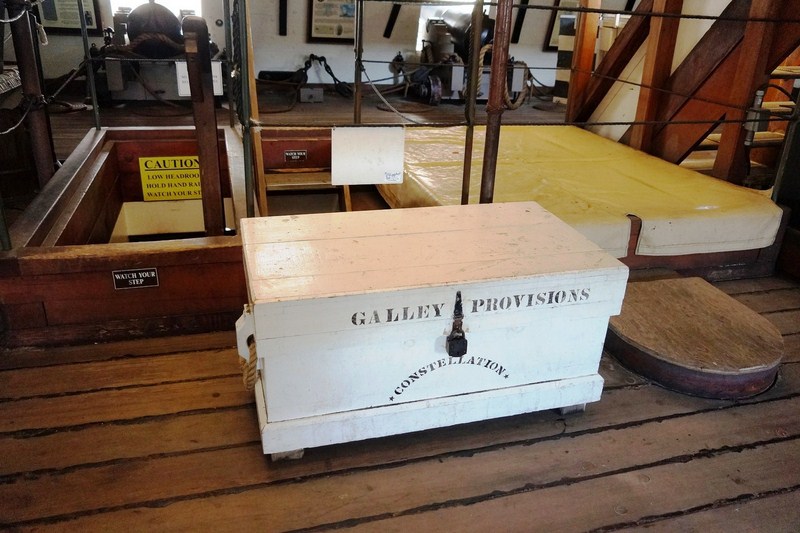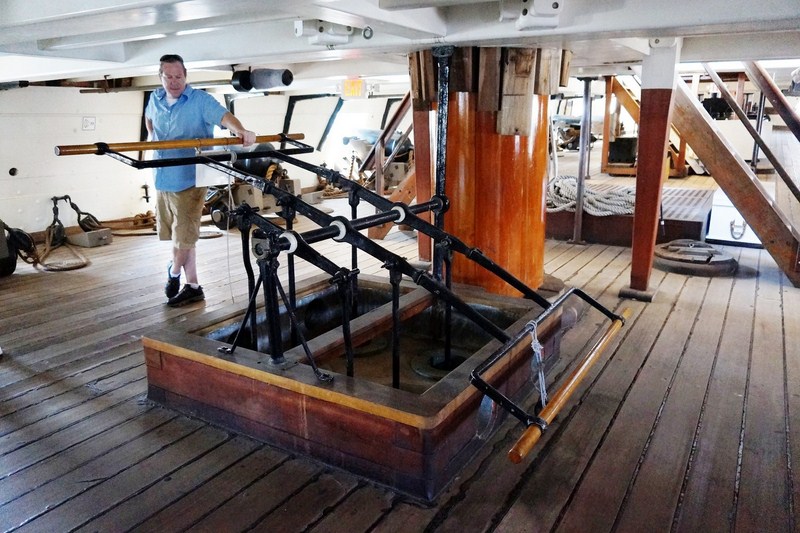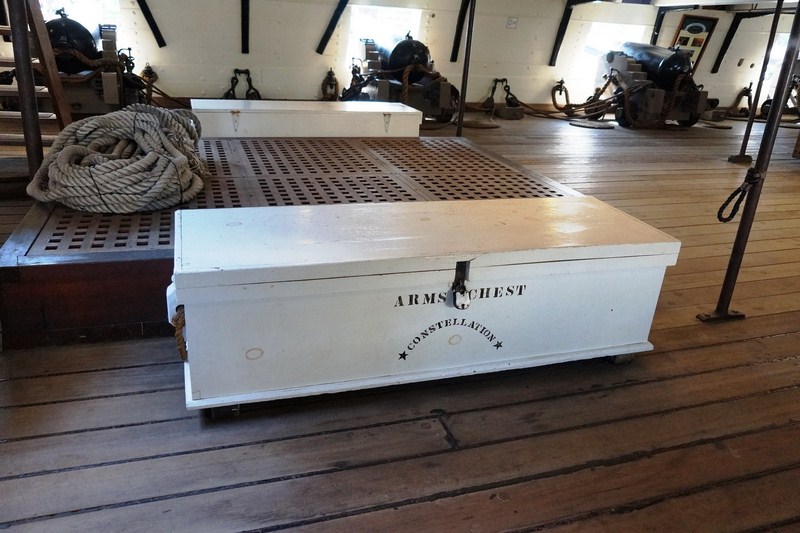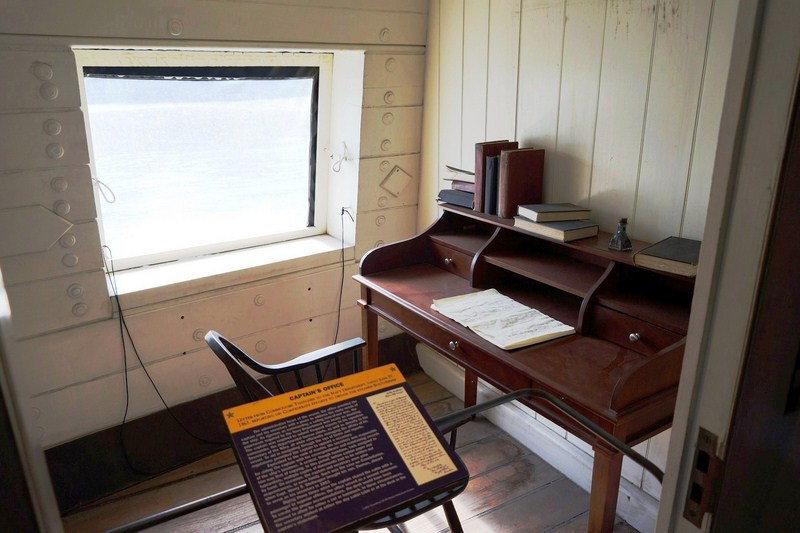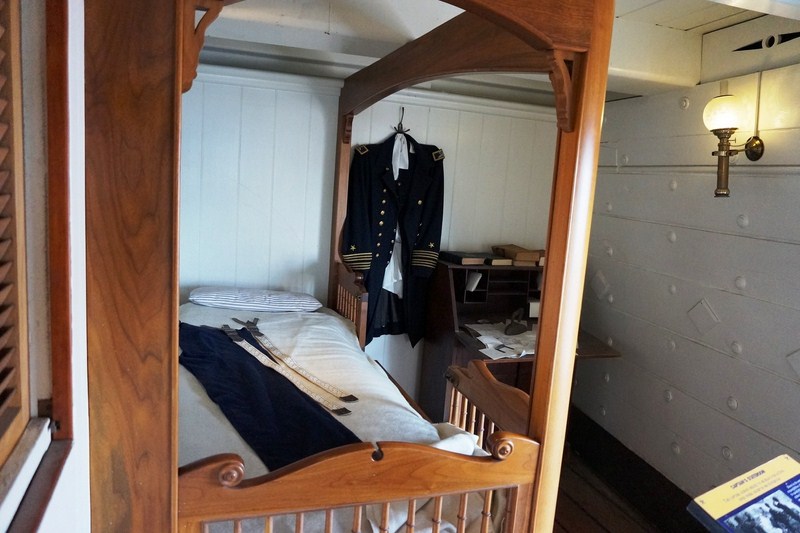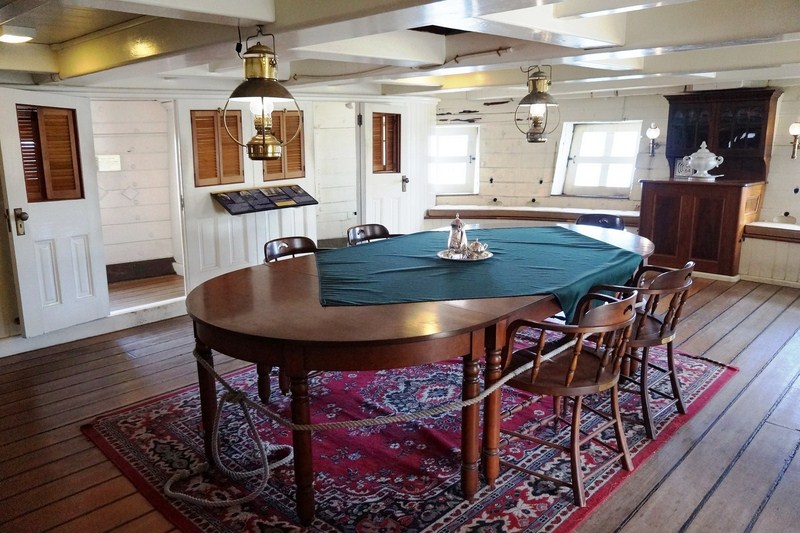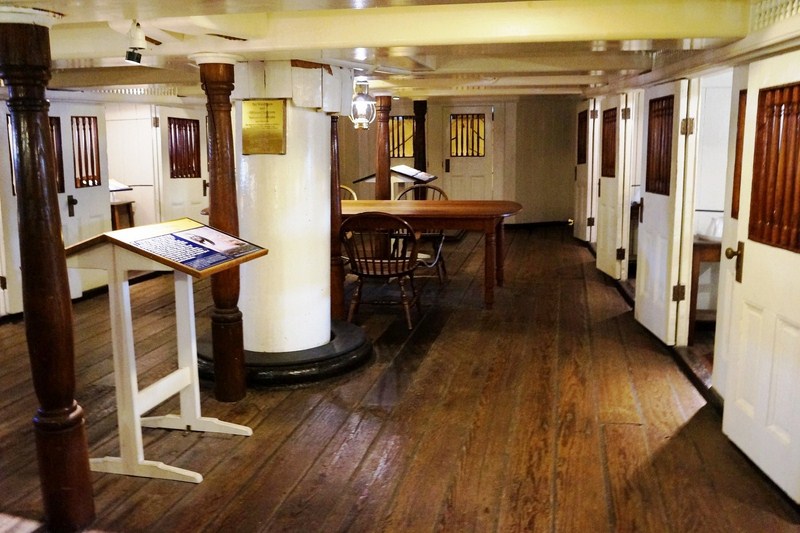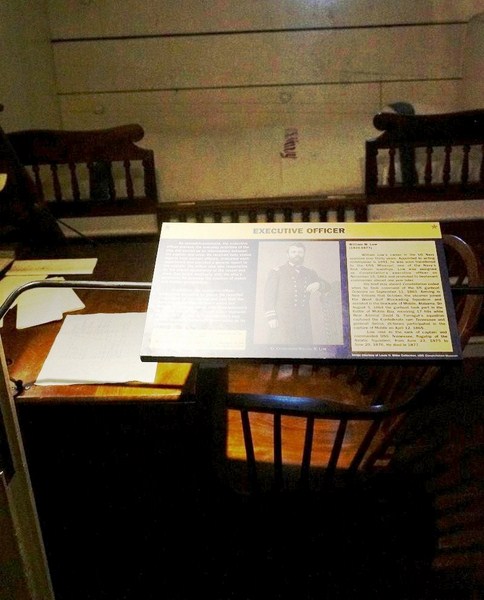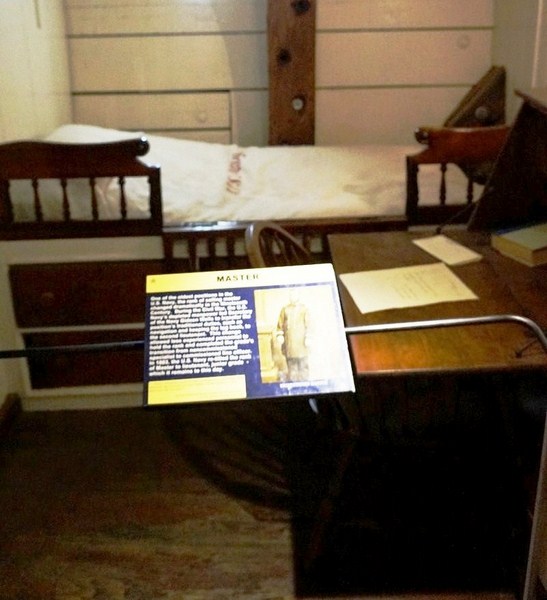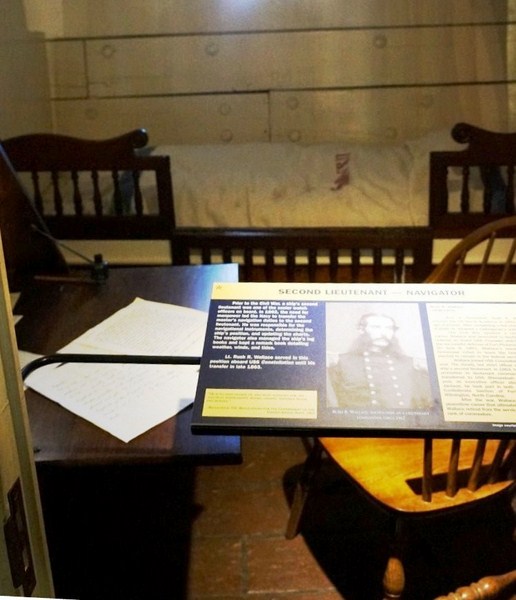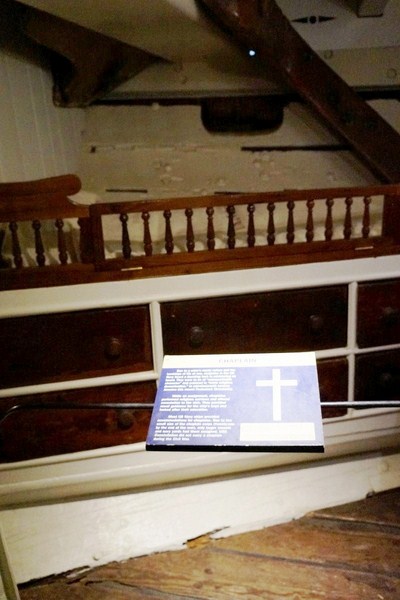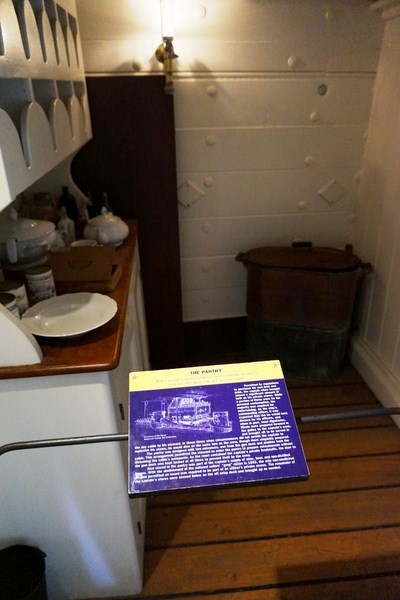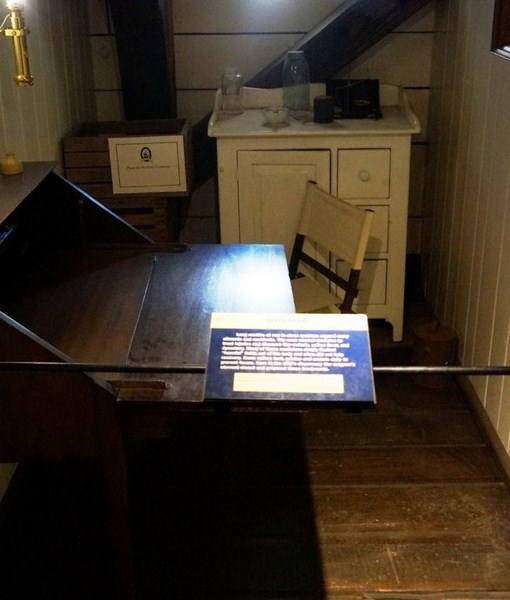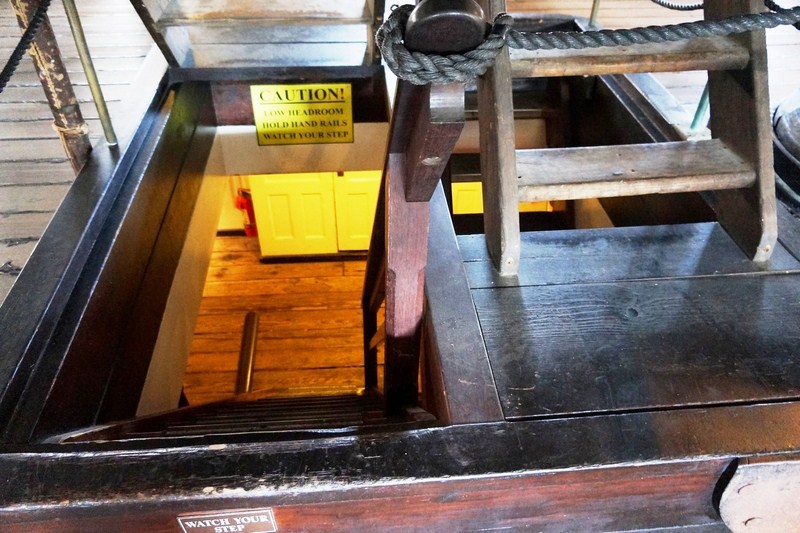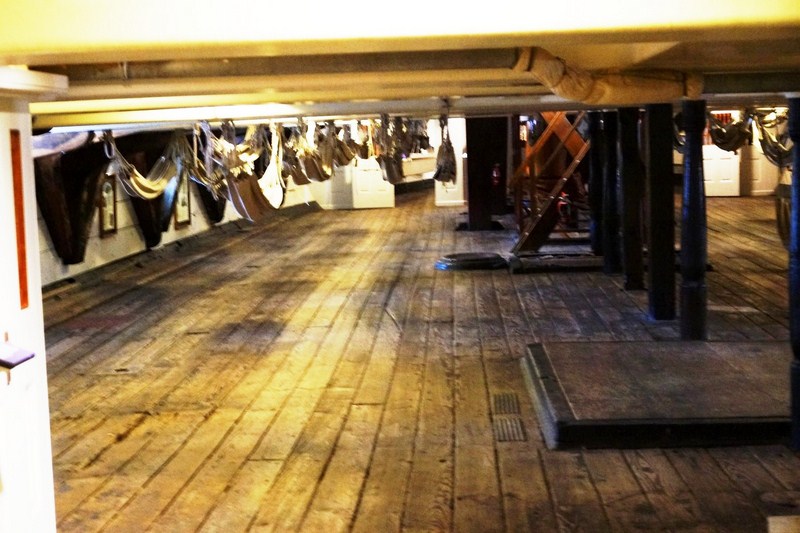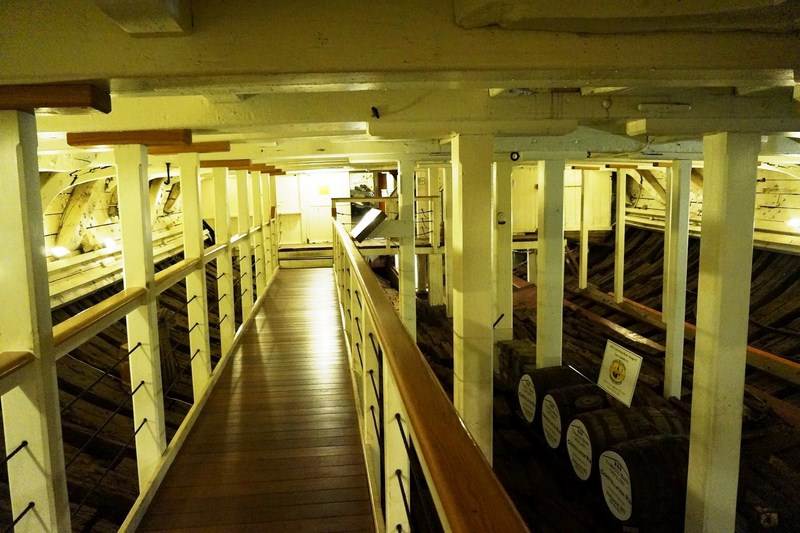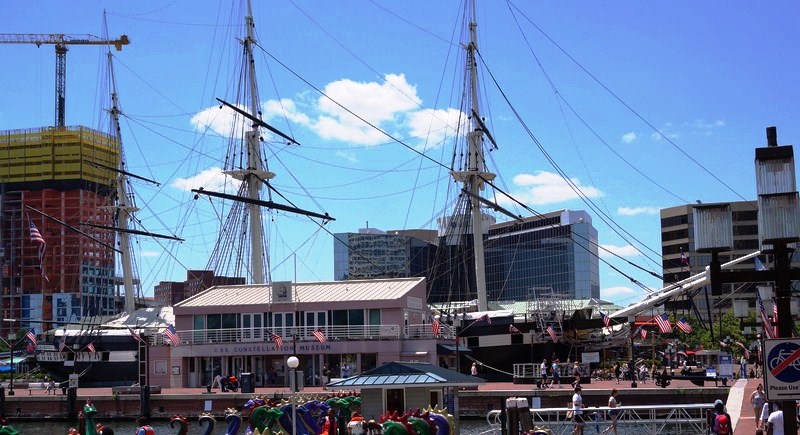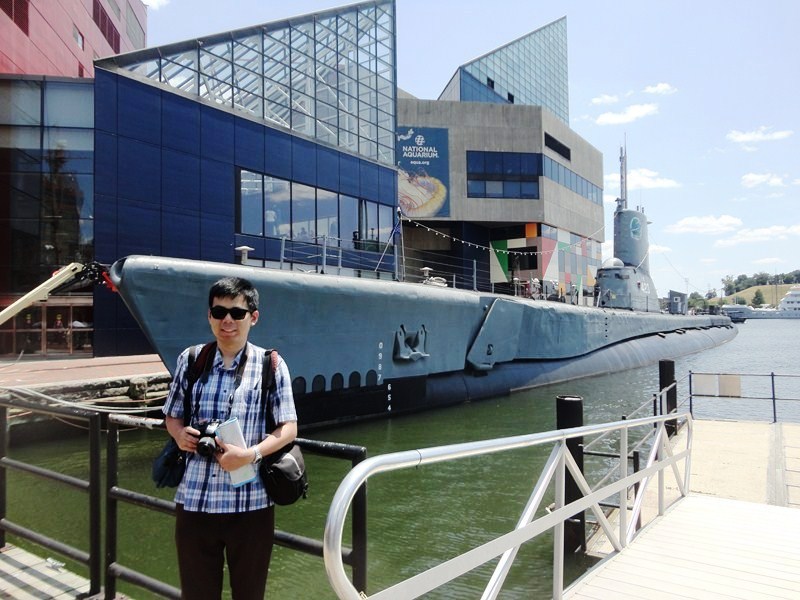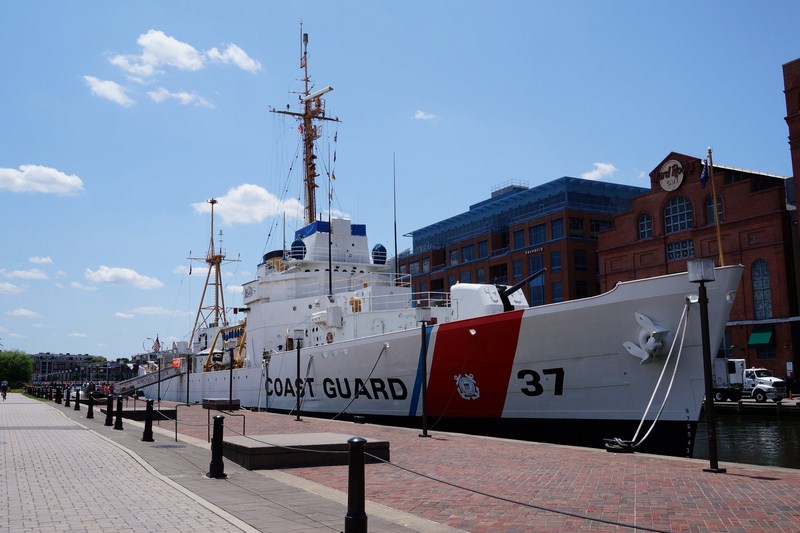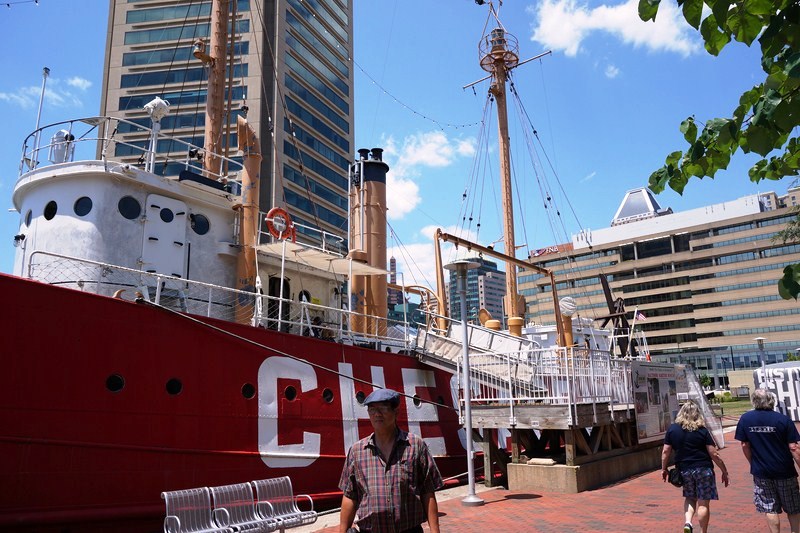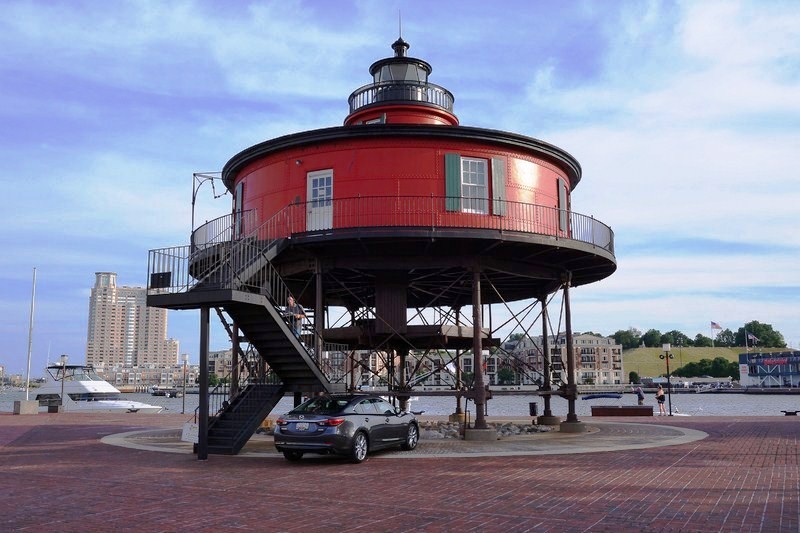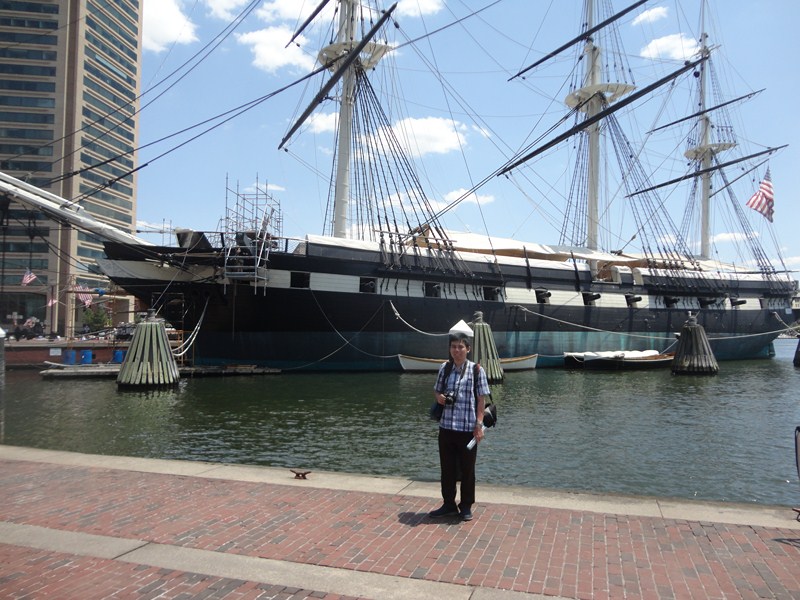The Hirshhorn Museum and Sculpture Garden, an art museum sited halfway between the Washington Monument and the US Capitol, anchoring the southernmost end of the so-called L’Enfant axis (perpendicular to the Mall’s green carpet), is part of the Smithsonian Institution.
Conceived as the United States’ museum of contemporary and modern art, it currently focuses its collection-building and exhibition-planning mainly on the post–World War II period, with particular emphasis on art made during the last 50 years. The museum has a budget of US$8 million, which does not include the US$10 to US$12 million in operational support supplied by the Smithsonian Institution.
The museum was initially endowed, during the 1960s, with the permanent art collection of more than 6,000 items of Joseph H. Hirshhorn (who enjoyed great success from uranium-mining investments), started in his forties, which consisted of works from classic French Impressionism as well as those by living artists, American modernism of the early 20th century, and sculpture brought from the Hirshhorns’ Connecticut estate and other properties.
Here is the museum’s historical timeline:
- In 1966, an Act of Congress established the Hirshhorn Museum and Sculpture Garden. Most of its funding was federal, but Hirshhorn later contributed US$1-million toward its construction.
- On July 1967, an original plan, with an elongated, sunken rectangle crossing the Mall with a large reflecting pool across the Mall, designed by architect Gordon Bunshaft, was approved.
- In 1969, groundbreaking takes place on the former site of the Army Medical Museum and Library (built in 1887) after the brick structure was demolished.
- On July 1, 1971, after excavation was started, a revised design, with a smaller footprint, was approved. The revised design, deliberately stark, using gravel surfaces and minimal plantings to visually emphasize the works of art, also shifted the garden’s Mall orientation from perpendicular to parallel and reduces its size from 8,100 sq. m. (2 acres) to 5,300 sq. m. (1.3 acres).
- In 1974, the museum was opened with three floors of painting galleries, a fountain plaza for sculpture, and the Sculpture Garden. In the first six months, one million visitors saw the 850-work inaugural show.
- In the summer of 1979, the Sculpture Garden was closed.
- In September 1981, the Sculpture Garden was reopened after a renovation and redesign by Lester Collins, a well-known landscape architect and founder of the Innesfree Foundation. The design introduces plantings, paved surfaces, accessibility ramps, and areas of lawn.
- In 1985, the Museum Shop is moved to the lobby, increasing exhibition space at its former location on the lower level.
- On December 1991, the Hirshhorn Plaza is closed.
- In 1993, Hirshhorn Plaza is reopened after a renovation and redesign by landscape architect James Urban. The 11,000 sq. m. (2.7-acre) area around and under the building is repaved in two tones of gray granite, and raised areas of grass and trees are added to the east and west.
- In 2013, the Hirshhorn Museum and Sculpture Garden drew around 645,000 visitors.
- In 2014, the Museum Shop is moved back to the lower level.
Here are some technical information on the museum:
- The building and its walls were surfaced with precast concrete aggregate of “Swenson” pink granite
- The building has a diameter of 231 ft., 115 ft. for the interior court and 60 ft. for the fountain.
- The building is 82 ft. high and elevated 14 ft. on 4 massive, sculptural piers.
- The museum provides 5,600 sq. m. (60,000 sq. ft.) of exhibition space on three floors inside and nearly 4 acres outside in its two-level Sculpture Garden and plaza for a total of 197,000 sq. ft. of total exhibition space, indoors and outdoors.
- It has a 274-seat auditorium at the lower level.
- There are 2.7 acres around and under the museum building.
- The 1.3-acre Sculpture Garden, across Jefferson Drive, was sunk 6–14 ft. below street level and ramped for accessibility.
- The second and third floor galleries have 15-ft. high walls, with exposed 3-ft. deep coffered ceilings.
- The lower level includes exhibition space, storage, workshops, offices while the fourth floor includes offices and storage.
The building, an open cylinder elevated on four massive “legs,” with a large fountain occupying the central courtyard, itself is an attraction. The new federal museum’s modern look and intrusively expansive sculptural grounds is a striking contrast to everything else in the city.
At the museum entrance is the deceptively simple Still Life with Spirit and Xitle , one of the most well-known works of art by artist Jimmie Durham (a sculptor who is known for his sense of humor and irreverence), features a slapstick disaster scene (intended to capture the clash between industrial and ancient spirits) of a 1992 Chrysler Spirit being crushed by a 9 ton red basalt boulder with a comical smiley face painted on it.
Notable artists in the Hirshhom collection include Pablo Picasso, Henri Matisse, Mary Cassatt, Thomas Eakins, Henry Moore, Jackson Pollock, Mark Rothko, Franz Kline, Hans Hofmann, Morris Louis, Kenneth Noland, John Chamberlain, Francis Bacon, Willem de Kooning, Milton Avery, Ellsworth Kelly, Louise Nevelson, Arshile Gorky, Edward Hopper, Larry Rivers, and Raphael Soyer among others.
The Master Works from the Hirshhorn Collection, on view from June 9, 2016 to September 4, 2017, is a new rehanging of the permanent collection galleries at the third-level. It features more than 75 works in virtually all media, highlights of Joseph Hirshhorn’s original gift, alongside some of the newest additions to the collection.
They include several major artworks returning to view after more than a decade (such as Candian painter Jean-Paul Riopelle’s 1964 Large Triptych), as well as in-depth installations devoted to some of the most important artists in the collection.
Exhibited are more than a dozen paintings and works on paper by Dutch abstract expressionist artist Willem de Kooning alongside sculptures by Swiss sculptor Alberto Giacometti, two of the 20th century’s greatest figurative artists.
Other cornerstones of the collection on view are Constantin Brancusi’s Sleeping Muse I (1909–10), Edward Hopper’s Eleven A.M. (1926), Edward Ruscha’s The Los Angeles County Museum on Fire (1965–68), French-American artist Louise Bourgeois’ Legs (1986/cast 2008) and Australian sculptor Ron Mueck’s Untitled (Big Man) (2000).
In an adjacent room is The End of Ending (2012), a massive sculptural installation by Argentinian artist Eduardo Basualdo which occupies all but a sliver of walkable space in a gallery. R.S.V.P. X (1976/2014), the performative sculpture by African-American Senga Nengudi (among a group of artists in 1970’s Los Angeles who explored conceptual art in their pursuit of a distinctly African-American aesthetic), also appears at the museum for the first time.
The exhibition is augmented by a special loan of Scottish painter Peter Doig’s painting Spearfishing (2013), which hangs alongside richly colored canvases by British figurative painter Francis Bacon, American painter Richard Diebenkorn and Cuban artist Wifredo Lam.
Some of the most recent additions to the Hirshhorn’s collection are represented by new cultural histories. O Abuso da História (The Abuse of History, 2014) is a video, by Brazil-based Mexican artist Héctor Zamora, of a riotously destructive group performance at São Paulo’s historic Hospital Matarazzo.
Cuban artist Reynier Leyva Novo’s 5 Nights (2014), from his series “The Weight of History,” in the Lerner Room (overlooking the National Mall), maps revolutionary 20th-century manifestos by Vladimir Lenin, Adolf Hitler, Fidel Castro, Mao Zedong, and Muammar Gaddafi to conceptual monochromes, based on the amount of ink spilled in the writing of each text.
During our visit to the museum, we also explored three ongoing temporary exhibits – the “Markus Lupertz: Threads of History” Exhibit, the “Linn Meyers: Our View From Here” Exhibit and the “Ai Weiwei: Trace at the Hirshhorn” Exhibit.
Check out “The Markus Lupertz: Threads of History Exhibit” “The Linn Meyers: Our View from Here Exhibit” and “”The Ai Weiwei: Trace at Hirshhorn Exhibit“
The Sculpture Garden, outside the museum, features works by artists including Auguste Rodin, David Smith, Alexander Calder, Jean-Robert Ipoustéguy, Jeff Koons, and others. A permanent installation and a major attraction, since 2007, in the Sculpture Garden is Yoko Ono‘s famous Wish Tree for Washington, DC.
Hirshhorn Museum and Sculpture Garden: 700 Independence Ave SW & 7th St SW, National Mall, Washington, D.C. 20560, United States. Website: www.hirshhorn.si.edu. Admission is free. Open daily, 10 AM – 5:30 PM.






























































































































































































